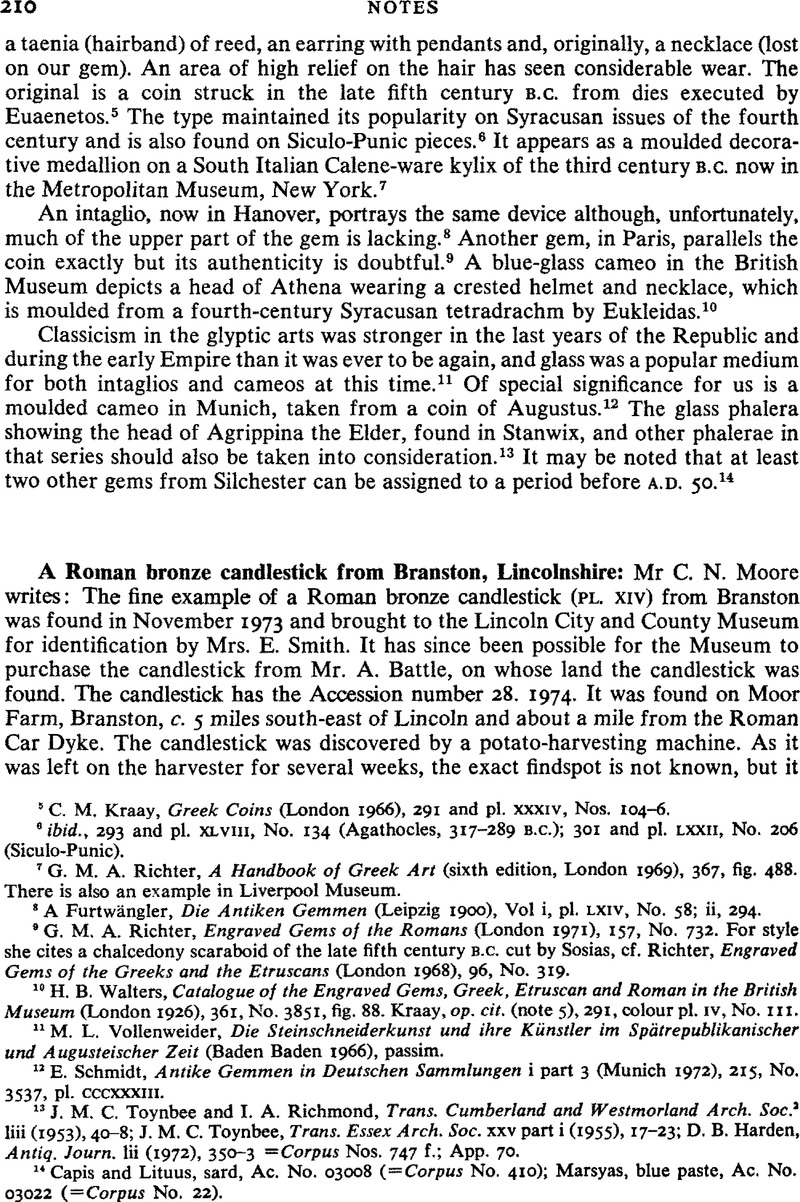Article contents
A Roman bronze candlestick from Branston, Lincolnshire
Published online by Cambridge University Press: 09 November 2011
Abstract

- Type
- Notes
- Information
- Copyright
- Copyright © C. N. Moore 1975. Exclusive Licence to Publish: The Society for the Promotion of Roman Studies
References
1 Potato-harvesting machines are proving a remarkably able tool for making archaeological discoveries, and it should be noted that the Roman bronze patera-handle recently published by the writer was found under similar circumstances. Britannia iv (1973), 153–59. Potato-harvesters have also recently found a number of stone axes, Bronze Age palstaves and socketed axes.Google Scholar
2 The two coins of Constantine II found in the candlestick are detailed below; they are contemporary imitations and read:

3 R. E. M. Wheeler, London in Roman Times; and J. Liversidge, Britain in the Roman Empire (1968), 162–65. For Graeco-Roman Candelabra see Comstock, M. and Vermuele, C., Greek, Etruscan and Roman Bronzes in the Museum of Fine Arts (Boston 1971) 353, No. 496. Another example with a pricket was recently sold at Sotheby's Sale, 9 July 1974, lot 81, and though catalogued at eighth/ninth century is presumably much earlier.Google Scholar
4 Arch. Journ. cxxvii (1970), 182–88.Google Scholar
5 Pernice, E., Die Hellenistische Kunst in Pompeji iv, Gefässe und Geräte aus Bronze (Berlin and Leipzig, 1925), p. 38, figs. 47, 48; p. 40, fig. 51; p. 41 and pl. xiv.Google Scholar
6 Lincolnshire Architectural and Arch. Soc. Reports and Papers x (1963), pt. 1, p. 8, pl. VIII.Google Scholar
* The writer is indebted to Dr. M. Henig for references to comparative pieces; to Mr. J. Marjoram, formerly of the City and County Museum and now of Sheffield Museum for the identification of the coins; to Mr. K. S. Painter and Miss C. Johns of the British Museum for their help with the candlestick's identification, and Dr. A. E. A. Werner and Mr. Nimrao at the British Museum Research Laboratory. For the inscription see JRS lv (1965), 221, No. 4.Google Scholar
- 1
- Cited by




